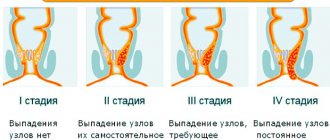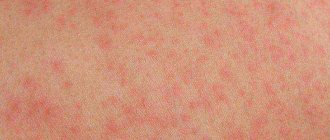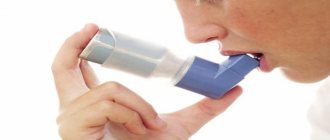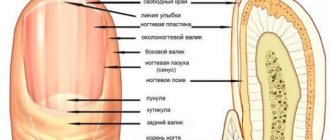What is thrush, the mechanism of development in women
In common parlance, a disease of the vaginal mucosa with a “cheesy” discharge is called thrush; in medical terminology it sounds like vaginal candidiasis.
Vaginal candidiasis is a disease caused by the development of fungi of the Candida family on the walls of the vagina, accompanied by inflammatory processes.
According to statistics, most women suffer from the disease, only to varying degrees. For some, white discharge is accompanied by severe itching, while for others, thrush does not cause any discomfort.
By what signs can a woman suspect she has candidiasis?
Ladies know what thrush is by the discomfort they feel in the intimate area. This is severe itching and vaginal discharge, initially clear, but after a few days turning into white, thick, cheesy.
It was the latter characteristic that gave candidiasis its popular name. In addition to the clear signs that appear several days after the fungi become active, the patient is worried about a general deterioration in her health, for which she cannot find an explanation.
The disease also affects men, but due to the physiological structure of their genital organs, its manifestations are less pronounced and they tolerate the disease more easily.
Thrush is subject to mandatory treatment, because the advanced form can take a chronic course and cause frequent relapses that affect the patient’s quality of life.
Causes of thrush
Thrush in women (causes, treatment and duration of therapy is determined only by a doctor) is the result of many pathological factors. Normally, bacteria of the genus Candida live on the mucous membranes of the human body, maintaining their normal functioning. If the body does not function properly, the number of these bacteria increases and leads to candidiasis.
Causes of candidiasis:
- immunity decreases (frequent viral diseases, vitamin deficiency, stress);
- the presence in the body of chronically developing infections that the body constantly has to fight;
- venereal diseases;
- taking certain antibiotics and hormone-based medications;
- diabetes;
- pregnancy;
- allergy.
In case of allergies, it is necessary to simultaneously consult two doctors - an allergist and a gynecologist, since these diseases support each other. The above reasons are ambiguous; vaginal candidiasis can occur as a result of others, or when several occur simultaneously.
Life history and concomitant diseases
History taking
During the first appointment, the gynecologist or dermatovenerologist must ask the patient what diseases she suffered in the past and what chronic processes are currently taking place.
Vulvovaginal candidiasis is more common in women aged 20-40 years. People most susceptible to the disease are those suffering from:
- diabetes mellitus;
- Down syndrome;
- blood diseases.
In people infected with the immunodeficiency virus, candidiasis of the oral cavity and genital organs occurs in 90% of cases. This occurs even with relatively intact immunity.
What to do if you have thrush?!
Read more >> |
Women who are undernourished are more susceptible to developing candidiasis. The reason is the weakening of immune mechanisms due to insufficient supply of nutrients necessary for the normal functioning of the body and microelements. The disease also develops in people who lead a wild lifestyle and have a large number of sexual partners.
Another risk factor is pregnancy. This is due to the immunosuppressive effect of progesterone and hormonal changes. The incidence of vaginal candidiasis in pregnant women is 3 times higher than in non-pregnant women. The likelihood of the disease increases with:
- wearing tight, tight clothing;
- increased body mass index;
- sweating;
- violation of personal hygiene rules.
In recent years, there has been an increase in the incidence of candidiasis. This occurs due to uncontrolled use of antibiotics, work in harmful conditions, and exposure to adverse chemical factors. Hospital-acquired strains of the fungus that are difficult to treat with medication are detected in patients who have undergone long courses of treatment in a hospital.
First signs
Thrush is determined by the first signs:
- burning in the genitals;
- redness;
- copious white discharge (with a sour milky smell, the consistency of cottage cheese);
- discomfort during intimacy.
The very first symptoms
Normally, a woman’s discharge is transparent and very small. The acute form of vaginal candidiasis makes itself felt with copious white discharge. They are thick, flaky and have the smell of sour milk.
Located in the vagina and on the outer surface of the labia, they cause irritation of the mucous membranes and skin, which leads to redness, inflammation and unbearable itching. There is dryness in the vagina, and sexual intercourse turns into torture: due to friction and insufficient amount of lubricant produced, the walls are injured and wounds appear. Washing and going to the toilet in a small way often causes discomfort for the same reason.
The first signs of candidiasis in the mouth are the appearance of small white spots that quickly grow and unite, covering an increasingly larger area. At the initial stage, they can be easily removed with a cotton swab or gauze. The favorite place is the inside of the lips and gums. Dry mouth and the appearance of an unusual metallic taste are all primary signs of the presence of fungus.
Late symptoms
After the first signs of the appearance of thrush, an acute stage of the disease begins, which is characterized by the following:
- redness and swelling of the mucous membrane;
- the appearance of small cracks;
- plaque on the walls of the vagina;
- pain during intimacy;
- irritability and increased fatigue from discomfort and pain.
If a woman does not seek medical advice and examination in time, the disease enters a calmer stage, its spread continues, but the symptoms become less noticeable (discharge becomes scarcer, mucous membranes become overgrown with connective tissue).
Diagnostics
To diagnose thrush, a gynecologist takes a smear from a woman’s vagina and sends it to the laboratory. A flora smear will help determine the composition of the microflora and the presence or absence of pathogenic bacteria.
The causes of thrush in women come down to personal hygiene and other features. After the smear, the doctor will prescribe the correct treatment.
According to the norm: 90% should be lactic acid bacteria, 1% each should be Candida and Gardnerella.
If it is necessary to determine what type of bacterium caused the disease, a culture is performed. This will help determine the sensitivity of the bacteria to the drug. The doctor will be able to confirm the disease through examination with a special drug - a colcoscope.
If a severe stage of the disease is detected, the gynecologist may prescribe additional examinations: stool analysis for dysbiosis, sexually transmitted infections, immunogram.
How to understand that candidiasis has begun?
Signs of thrush in girls or boys will help identify candidiasis. You can understand that changes are occurring in the body by the symptoms of the manifestations. Itching and burning sensations are the first signals indicating an illness. The presence of pain in the abdomen and genital area becomes a strong motivation to consult a doctor who is able to detect Candida fungus, distinguish it from other diseases, determine the nature of its spread and tell how to treat it. Candidiasis has similar symptoms to colds (cough, weakness, fever), which can complicate the task of self-diagnosis. There is a test for determining thrush, which helps to identify the disease at home.
How to detect in a woman?
The procedure will help identify the disease even in the absence of symptoms.
If the discharge smells like fish, this is vaginitis, and the smell of fish also accompanies a disease such as trichomoniasis. To determine the disease, a thrush test is used, since the symptoms of thrush in girls do not always give complete confidence in the presence. These include “Frautest”, “Frautest candida” and there is also “Vinalight”. It is convenient to do such tests yourself at home, even if the problem is just beginning.
If candidiasis is asymptomatic, tests will also help diagnose the fungus. They are based on test cards that contain antibodies to determine the fungal antigen. But gynecologists recommend double-checking the results of the indicators. The first signal that indicates the presence of a female fungal infection is the appearance of leucorrhoea. In gynecology, leucorrhoea is an uncharacteristic discharge due to a disease of the genital organs. Dry skin, allergic rash, pain - thrush syndromes in women. A detailed diagnosis of the disease is made by a gynecologist.
How to detect in a man?
The causes of candidiasis in men are similar to those in women, and the symptoms are similar, but not identical. Typical signals of candidiasis for a boy:
- the appearance of plaque on the head of the penis;
- itching and rash in the groin area;
- painful urination;
- unpleasant odor;
- painful sexual intercourse.
Irritation of the mucous membrane provokes itching.
They manifest themselves differently in every man. Their intensity, severity and manifestations differ. A characteristic feature of male candidiasis is its asymptomatic nature. A man is a carrier of the fungus, but rarely physically feels its presence in the body. Therefore, the above tests for thrush or an examination by a urologist will help you determine candidiasis in a man yourself.
Treatment of thrush in women
Thrush in women, which is in a mild stage, is treated locally - suppositories or tablets, which consist of antifungal components: Natamycin, Miconazole and others. It is important that the causes of the disease are identified to prevent recurrence.
In the acute stage of the disease, treatment lasts from 1 to 7 days, depending on the strength of the drug. Most often, the effectiveness of the drug is 85-95%, so you should monitor personal hygiene during treatment and abstain from sexual intercourse for a while.
Gynecologists do not recommend the use of broad-spectrum drugs, as they can kill the normal microflora of the vagina.
In case of a mild stage of the disease, it will be enough to take Fluconazole once. It is also used if local therapy does not produce results. With any treatment, it is necessary to direct efforts to the formation of normal microflora; for this, eubiotics are prescribed. Even if the symptoms of candidiasis have disappeared, only a smear examination will help confirm the absence of the disease.
Symptoms
If some unfavorable factors begin to affect the body, then the vaginal mucosa becomes an ideal place for yeast to begin to multiply. In this case, the disease is accompanied by an inflammatory process. If the immune system is weakened, then gradually the fungi will begin to penetrate directly into the mucous membrane itself. Because of this, unbearable burning and itching occurs. All this is accompanied by copious discharge with a cheesy consistency. During illness, swelling of the external genitalia may appear. Sometimes pain and itching intensify during urination or during sexual intercourse.
In some cases, candidiasis may not be accompanied by any symptoms at all; the girl may not suspect that she is a carrier of the infection. Vaginal candidiasis often accompanies other dangerous sexually transmitted infections. Microorganisms change the pH of the vagina quite strongly, and candidiasis begins to actively develop. The basis of the correct and healthy microflora of the vagina is the so-called lactobacilli, which die during sexually transmitted infections.
Effective candles, instructions for use
Suppositories and tablets for vaginal use are prescribed for the initial and mild stage of the disease; they are local preparations.
The most effective are considered:
- Pimafucin is a low-toxic drug, its effect spreads widely and fights all microbes. The course of treatment is up to 6 days.
- Antifungol - acts on bacteria of the genus Candida, destroying them. Take 7 days, once every 24 hours.
- Polygynax - tablets for local treatment, which is carried out for 9 days.
- Ginezol-7 – vaginal suppositories, kill bacteria and fungi. Treatment is carried out for 2 weeks.
Treatment may be accompanied by unpleasant sensations that remain for 2 weeks after the end of therapy.
Comparative characteristics of drugs:
| Name | Price, rub.) | Peculiarities |
| Pimafucin | 270 | Effective, safe to use during pregnancy, quick relief from symptoms |
| Antifungol | 195 | Effective, prohibited in the first trimester and during lactation |
| Polygynax | 360 | Improves processes in the mucous membrane, is effective in the fight against Candida fungus, is not recommended for use during lactation, relieves symptoms in a short time |
| Ginesol-7 | 370 | Quick relief from symptoms; during pregnancy, can only be used in the first trimester |
Tablets for thrush
Women prefer to be treated with tablets, since the painful symptoms disappear in 2-3 days. The tablets usually have a broad effect and kill bacteria throughout the body, thereby reducing the recurrence of thrush. But often gynecologists prescribe an integrated approach - topical use of ointments (to eliminate itching) and taking tablets orally.
Doctors recommend drugs that help destroy the fungus of the genus Candida, the most famous:
- Fluconazole – taken once, 150 mg.
- Ketoconazole – take 6 days, 1 tablet every 24 hours.
- Pimafucin – 1 tablet per 24 hours, course of administration 4 days.
- Nystatin – 4 tablets per 24 hours, divided into 4 doses, treatment for 2 weeks.
All medications must be taken according to the instructions and recommendations of the attending physician.
Other drugs
To prevent recurrence of the disease, both partners must undergo treatment. Sometimes treatment with tablets and ointments is not enough, since it is necessary to restore the microflora, normalize the amount of Candida bacteria to the required volume, and strengthen the immune system.
Therefore, for candidiasis, a complex of medications and drugs is used:
- Antifungal agents - ointments and gels (for external use) and capsules and tablets (for internal use). The composition of the drugs includes: Fluconazole, Iconazole.
- Antibiotics – used against bacteria of the genus Candida and others arising from thrush, for local and general use (Pimafucin, Mikosist and others). Drugs that contain more than one antibiotic also relieve itching and burning thanks to the hormonal component - Terzhinan, Polygynax.
- Probiotics – they are taken to normalize the microflora and acidity of the vagina. They consist of components that promote rapid healing of the mucous membrane. Available in the form of tablets and suppositories for topical use with lacto- and bifidobacteria - Gonoflor, Bifidumbacterin, Lactobacterin and others.
- Immune-acting drugs are taken to strengthen the immune system; their main task is to maintain the required amount of Candida bacteria. Available in the form of tablets (Likopid, orally) and suppositories - Viferon and others.
Traditional recipes for thrush
Thrush in women (the causes, treatment and severity of the disease must be identified by the attending physician) can be cured with traditional medicine recipes. They are increasingly relevant, since there are significantly fewer side effects and contraindications from them than from chemical drugs.
But do not forget about possible allergic reactions to plants.
St. John's wort
It is excellent in treating candidiasis due to its antifungal and anti-inflammatory effects. St. John's wort contains a large amount of phytoncides that can cope with Candida. The decoction is administered by douching, for this purpose 3 tablespoons are poured. herb leaves with 2 liters of boiling water, infuse for 3 hours. Douching is done 3 times in 24 hours.
Raspberry leaves
The leaves, like sage infusions, are rich in estrogens and antimicrobial components.
To prepare, mix raspberry leaves (2 tbsp) and sage (2 tbsp) in equal proportions, pour 2 liters of boiling water, let stand for 30 minutes and strain through cheesecloth.
Douching should be carried out 3 times every 24 hours with an infusion at room temperature.
Oak bark
It deserves special attention due to its high antibacterial, anti-inflammatory and protective properties. Oak decoction prevents microbes from spreading deep into the mucous membrane.
You need to take 3 tbsp. oak bark, 1 tbsp. lavender and string. Mix dry ingredients. 1 tbsp. pour 150 ml of boiling water over the herbs, let stand for at least 1.5 hours, strain, and douche 3 times every 24 hours.
Cranberry and viburnum
Both components are effective in the fight against thrush. The polyphenols contained in these berries slow down the growth of yeast bacteria and strengthen the mucous membranes. The juice of these berries prevents the development of thrush. Just use berries without added sugar (sugar promotes the growth of bacteria).
Treatment is carried out in two ways:
- Take juice diluted with water in equal proportions 5 times a day, 2 tbsp.
- Douching is carried out 3 times every 24 hours, diluting 1 tbsp. juice with a glass of water, after straining it.
Treating thrush with baking soda
Regular baking soda is an effective remedy for treating candidiasis. Availability, inexpensive price and good results from treatment with this drug have made it very popular among women suffering from thrush.
Baking soda, otherwise known as sodium bicarbonate, is an alkali. When interacting with the mucous membrane of the genital tract, it lowers the pH. Fungi of the genus Candida can actively reproduce only in an acidic environment, so alkalizing the vagina with soda solutions can suppress their development and speed up the healing process.
There are many ways to use baking soda for candidiasis:
- Wiping the affected mucous membrane and skin with a cotton-gauze swab dipped in a warm soda solution. This procedure is recommended to be carried out 2 times a day (morning and evening), before bedtime. After treatment, the solution does not need to be washed off the skin.
- Wash the woman’s genitals twice a day with a weak soda solution.
- Warm sitz baths.
- Douching once a day for 2 weeks.
In order to quickly cure candidiasis with soda, you need to properly prepare the solution. To do this, add 1 tbsp to 1 liter of warm boiled water. baking soda and 0.5-1 tsp. alcohol solution of iodine, stir thoroughly until completely dissolved. The iodine present in this solution prevents the addition of concomitant bacterial infections and reduces the intensity of inflammation in vulvovaginal candidiasis. Homemade medicine for thrush cannot be stored for longer than a day; it is advisable to prepare the remedy immediately before using it.
Before using a soda solution, you should make sure that you are not allergic to iodine.
Aloe for candidiasis
The aloe houseplant, known to many under the other name “agave,” is effective in treating vaginal thrush in women. Good results can be achieved by starting to use aloe internally or as an external remedy at the first symptoms of the disease.
For candidiasis at home, use:
- A solution prepared from 1 tsp. fresh aloe juice mixed with 100 ml of boiled water. The resulting product should be divided into 3 equal parts and taken three times a day before meals. If desired, you can add 1 tsp to the medicine. honey
- To prepare vaginal tampons, carefully mix aloe juice with olive oil in a ratio of 1 to 3. The resulting gel-like composition should be moistened with ordinary tampons or tourniquets made from a sterile bandage and inserted into the vagina 2 times a day for 3-4 weeks.
- A mixture of aloe juice and Vaseline is used as a cream, which must be rubbed into the affected areas twice a day for 14 days.
The concentration of nutrients in the leaves increases over time. The most suitable for treating thrush at home are leaves that have been stored for 10-12 days in a cool, dry place (for example, on the bottom shelf of the refrigerator).
Nutrition and diet
Thrush in women (the causes, its treatment and the duration of the course of taking medications are individual) requires an integrated approach to cure, including an adjusted diet.
It is important to exclude simple carbohydrates from your diet:
- sugar;
- jam;
- chocolate;
- starch-containing products (potatoes).
Such products promote the growth of bacteria. Avoid eating fast carbohydrates for at least 3 months.
You should also refuse:
- spices and seasonings;
- carbonated and alcoholic drinks;
- products rich in dyes and preservatives;
- fatty and fried foods.
What to include in your diet:
- garlic (a folk antiseptic, deserves special attention in the treatment of thrush);
- green and onions;
- dairy products;
- blueberries, currants and cranberries, which have an antibacterial effect;
- vegetables and unsweetened fruits;
- seafood;
- olive oil;
- sufficient amount of water.
It is important to balance your diet by correctly distributing food intake throughout the day. Between meals you need to drink water, natural juices and kefir, which contributes to the proper functioning of the gastrointestinal tract.
Forms of candidiasis in women
What is thrush in women?
This is a gynecological disease that causes a lot of trouble for a woman. The scientific name of the disease is candidiasis. It is explained by the fact that the causative agent is the yeast fungus Candida, which constitutes its own microflora in 80% of the population. It is found on the mucous membranes of the body and on the genitals, including.
In essence, this is an infectious inflammatory process that can be represented by two types:
- acute thrush;
- recurrent mycosis.
The disease is most often characteristic of women of reproductive age. Other groups suffer from this disease less frequently. Thrush can also appear in virgins, which is associated with poor personal hygiene.
The disease manifests itself in the appearance of discharge on the genitals, similar in consistency and color to cottage cheese, and this indicates how to identify thrush in women. The disease is cured in different ways. Sometimes, with timely treatment, symptoms go away quite quickly.
Recently, the disease has become more common. Of all infectious and inflammatory processes of the reproductive organs, thrush accounts for up to 45%. Every woman should know the manifestations of thrush. This will allow you to make a diagnosis in a timely manner and prescribe the correct treatment.
Mechanism of disease
The fungus Candida albicans, which is the causative agent of thrush, creating the human microflora, may not manifest itself for a long time.
A woman's vagina is not normally sterile. The epithelium of the mucous membrane is a breeding ground for various microorganisms. Their number is strictly regulated by the human immune system.
Candida is present, among other things, and regulates the normal pH level of the vagina. This factor is important for the life of the epithelium, as well as for the normal process of fertilization.
The native flora of the vagina can come into contact with foreign microorganisms, thereby reducing the likelihood of infection there.
If a woman encounters this for the first time, she may not know how to understand that thrush has affected the genitals. Therefore, it is very important to know all the symptoms of this disease.
Thrush is caused by a certain range of causes. They trigger the disease mechanism when excessive proliferation of the fungus is not inhibited by anything. How do you know if it's thrush? There are reasons that contribute to its development.
These include the following:
- Treatment with antibacterial drugs. They are used to combat many, including fatal diseases. Allows you to defeat the disease within a short period of time. But they have one, rather significant side effect - they do not act selectively on a particular type of microbe, but disrupt the entire microflora in a woman’s vagina.
- Candida albicans is resistant to antibiotics and takes over the space in the vagina where other bacteria and germs used to live. The number of fungi increases, and the woman develops candidiasis, or thrush.
- Reduced immunity. Caused by chronic diseases and poor nutrition. It cannot inhibit the growth and reproduction of fungi. As a consequence of this, candidiasis develops in different parts of the body on the mucous membrane (intestines, oral cavity, reproductive organs).
- Metabolic disease. The root cause is diabetes in many cases. Blood sugar levels are disrupted, which leads to improper protein and fat metabolism. And signs of candidiasis appear in women.
- Improper control of blood glucose levels. Happens when taking insulin. It is a favorable environment where thrush can appear.
- Use of immunoglobulins. They also reduce immune defense, creating a breeding ground for fungi, which contributes to the appearance of signs of thrush.
- Poor nutrition. An imbalance of proteins, fats and carbohydrates with a predominance of the latter in food also creates favorable conditions for the development of the disease.
- The influence of disrupted hormonal levels in a woman’s body is another reason for the development of the disease. This may include pregnancy, the period of taking hormonal drugs, and age-related characteristics.
- Disruption of the endocrine system may be the root cause.
- The contact component (synthetic underwear or violation of the use of sanitary pads) is ideal for activating the activity of the thrush pathogen.
These reasons can upset the balance in a woman’s body and lead to illness.
Clinical picture
Typical symptoms will be:
- Discharge from the external reproductive organs. They leave clearly visible marks on underwear; their structure is mucus of various types with hard inclusions.
- Unbearable burning or itching sensation in the vaginal area. It is explained by inflammation of the delicate epithelial layer. When combing, a large surface is damaged and pathogens penetrate there. The process is accompanied by an increase in unpleasant feeling. Finding this sign will tell you how to understand that you have thrush.
- Feeling of pain when urinating. In this case, urine turns out to be an aggressive liquid. Receptors sensitive to inflammation react to it, and pain occurs.
- Specific smell. Not very intense, with a sour smell, the woman herself feels it clearly, but those around her do not.
- Swelling of the vaginal walls. It is formed due to the fact that small vessels on the surface of the vaginal mucosa dilate. This is how the body tries to get rid of toxic substances released by fungi. Swelling simultaneously causes redness.
Every woman should know these characteristic symptoms of thrush in order to take care of her health in time.
With relapses, the disease in women can become chronic. The main symptom will be a recurrence of the disease, when the woman thinks that the thrush has gone away. The frequency of the disease is 1-4 is considered normal, but if the disease occurs more than four times a year, then it is already a chronic disease.
Recurrence of candidiasis indicates the following pathologies in the body:
- weakening of the immune system;
- hormonal imbalances;
- violation of metabolic processes.
The causes of relapses may be:
- improper drug therapy;
- no treatment at all;
- self-medication.
In this case, candida develops rapidly and spreads to neighboring organs:
- urethra (urethritis begins here);
- bladder - this leads to the development of cystitis;
- cervix (cervicitis occurs).
To prevent recurrence of candidiasis, it is necessary to organize treatment that will eliminate the factor that provokes the disease.
Pregnant women need to be treated before giving birth, as there is a possibility of infecting the child during the birth process.
If there are obvious signs of thrush, it is necessary to exclude all factors that cause the inflammatory process. In this case, you may need to consult a gynecologist or gastroenterologist.
Thrush (candidiasis) is a fungal disease in which an inflammatory process occurs in the vagina. A certain amount of Candida fungi is always present in the natural microflora. Under suitable conditions, the growth of a colony of these microorganisms begins. In this case, the mucous membrane is damaged and inflammation develops.
In a healthy body, the development of infection is inhibited by the presence of beneficial bacteria that produce lactic acid. An acidic environment is harmful to fungi. Candidiasis occurs when the natural balance of beneficial and harmful microorganisms is disrupted for any reason.
Fungal waste products cause lactic acid to clot. With vaginal candidiasis, white lumps resembling cottage cheese appear in the discharge. The discharge has a characteristic weak sour odor.
There are two forms of thrush.
Uncomplicated – the most common. Symptoms of the disease appear moderately. No other infections are detected in the body. Exacerbation of the disease occurs no more than 4 times a year due to the fact that the woman’s immunity is quite strong.
Complicated - symptoms of acute thrush in women appear frequently. Relapses occur 5 or more times a year. This form of thrush is observed in diabetes mellitus, lack of nutrition, and also during pregnancy. That is, in cases where immunity is significantly reduced.
Timely treatment of the disease in the acute phase with the help of antifungal agents allows you to quickly destroy harmful microorganisms and completely get rid of unpleasant symptoms.
If the course of treatment is not completed or the disease is advanced, then a chronic form of thrush appears with periodic relapses at the slightest discomfort experienced by the body (cold, stress, eating unusual foods, taking medications). It is much more difficult to cure a fungus.
Complications of chronic thrush may include:
- Inflammation of the mucous membrane of the uterus and ovaries. The formation of adhesions that impair the patency of the fallopian tubes, leading to infertility or ectopic pregnancy.
- Inflammation of the bladder (cystitis).
- Intestinal inflammation.
- Infection enters the blood and spreads to other organs.
- A sharp weakening of the immune system, contributing to the development of other infections in the body. Concomitant diseases such as trichomoniasis, gonorrhea, genital herpes and others may occur.
If a pregnant woman is sick with thrush, then intrauterine infection of the fetus or infection of the child occurs during childbirth. He may develop pneumonia. Premature birth or termination of pregnancy in the 2nd trimester is possible.
How to treat during pregnancy?
Treatment of candidiasis when carrying a child must be carried out under the supervision of a gynecologist. He will prescribe a medication that does not harm the child, but is effective against the disease. Often, gynecologists during breastfeeding and pregnancy prescribe local therapy - suppositories.
Among the known drugs:
- Pimafucin has a destructive effect on the fungus itself, killing it. Allowed for use at any stage of pregnancy, even in the first weeks.
- Terzhinan - contains an antibiotic that kills bacteria. In addition to this drug, you must take complex vitamins.
Doctors do not recommend douching during pregnancy to avoid infection. Douching can be replaced by washing with infusion of chamomile or calendula.
How to treat chronic thrush?
Thrush in women, the causes, treatment and severity of which are not determined by the attending physician, often becomes chronic. Then therapy for candidiasis continues for more than 1 month. To begin with, the doctor conducts a thorough examination of the woman, taking tests and eliminating possible causes of the disease.
In combination with drugs for chronic candidiasis, drugs are prescribed to treat intestinal dysbiosis and strengthen the immune system.
In modern medicine there are additional means of combating recurrent thrush - magnetic therapy, laser therapy and others. Treatment of candidiasis in a newborn with chemical agents is carried out only in case of complications; for this, a weak solution of Chlorhexidine is used.
Medicines for the treatment of thrush
The most important information about any disease is how to cure it. This section contains truthful information about medications against various forms of candidiasis. However, here you will not find ready-made recipes for self-medication, since for candidal infections it does more harm than good. By taking medicine without a specialist's prescription, you greatly increase the risk of the disease becoming chronic, which is very difficult to cure.
Preparations for the treatment of thrush. Click on photo to enlarge
Here you will find answers to questions:
- Can thrush really be cured with one pill?
- Which dosage form is more effective: ointments, solutions, tablets or suppositories.
- How is thrush treated during pregnancy?
- Do expensive drugs have cheap analogues?
Does my sexual partner need treatment?
Symptoms of bacterial candidiasis in men:
- irritated red color of the flesh;
- inflammatory mucosa;
- white coating.
If a man has a strong immune system, his body’s protective properties are able to cope with this disease, otherwise, if he is intimate with a woman suffering from thrush, he is doomed to “catch” thrush.
Treatment should be started only if laboratory confirmation of the disease has been obtained. Medications must be prescribed by the attending physician.
Treatment of bacterial candidiasis should take place simultaneously in both partners, this will help prevent re-infection. During treatment, intimacy should be postponed until complete recovery from the disease is confirmed.
Treatment
What to do if thrush does appear, but for some reason you do not have the opportunity to see a specialist to receive qualified treatment? You can use certain folk remedies that have already proven their effectiveness. But it’s still better if you consult a gynecologist.
Complications
If the disease is in its initial stage, it is not difficult to cure it, but if the disease is advanced, it is difficult to treat and often carries additional complications. All internal genitourinary organs are affected, from the bladder to the kidneys.
A frequent complication of thrush is cervical erosion. This is a chronic disease with a large number of ulcers on the mucous membrane of the vagina and uterus.
Types of complications:
- Candidal urethritis is a process of inflammation of the mucous membrane of the urethra, caused by the Candida bacterium. The complication most often occurs in women with a wide and short urethra. Symptoms of this complication are itching, burning of the urethra, scanty curdled discharge with an unpleasant odor. A woman experiences pain when urinating. As the disease spreads to the mucous membranes, the pain intensifies.
- Candidal cystitis. If the disease reaches the urethra, it easily enters the bladder, and the woman will experience: high temperature; abdominal pain; burning and pain when urinating; headache; weakness; frequent urination; discharge with blood streaks (in the acute stage).
- Candidal pyelonephritis is the next stage of complication when the bacterium overtakes the female kidneys. The disease is manifested by high fever, frequent urination, and severe lower back pain.
- Candida cervicitis is an inflammatory process in the reproductive organs. The cervix is most often affected. The difficulty lies in the fact that the complication occurs asymptomatically and contributes to the formation of cysts and neoplasms on the cervical mucosa. The main danger of complications is disease of the reproductive system (problems with conception, pregnancy, and even infertility).
- Candidal adnexitis is an inflammatory process that affects the fallopian tubes and ovaries. Symptoms: body temperature up to 40; severe pain in the abdomen and lower back; putrefactive and mucous discharge; menstrual flow is inconsistent (scanty or heavy). As a result of the accumulation of pus in the ovaries, neoplasms can form. Pus can enter the uterus through the fallopian tubes and form a blockage. The disease is dangerous and requires immediate medical intervention.
- Spikes . In a normal state, the pelvic organs “move”; in the case of candidiasis, the movement is disrupted and organ fusion may occur.
- Infertility is one of the 5 dangerous manifestations of thrush. This is facilitated by inflammatory processes in the reproductive organs, overgrowth with connective tissue, blockage of pipes, formation of adhesions, and more.
- Decreased protective function of the body. Thrush can appear as a result of decreased immunity, and it also has a detrimental effect on it, since other bacteria enter the affected mucosa, leading to new diseases. If the disease is advanced, immunity is reduced, and cancer may develop.
- An unpleasant consequence of thrush is loss of sensitivity in intimate life. The connective tissue that forms at the site of the lesion is insensitive and leads to dryness and discomfort.
Causes of candidiasis
Thrush in women and men occurs due to a weakened immune system, which is unable to cope with changes in the body. Causes of thrush:
- non-compliance with hygiene rules;
- use of panty liners;
- long course of antibiotic treatment;
- stress;
- hypothermia of the body;
- change of climatic zones;
- promiscuity;
- exposure to synthetic intimate hygiene products;
- synthetic underwear;
- HIV;
- lung diseases;
- infection on beaches and open waters;
- hormonal imbalance;
- reaction to water for washing;
- improper diet, unhealthy and fatty foods.
A relapse of candidiasis can be triggered by improperly disinfected linen or other surfaces previously colonized by the fungus.
Signs in women and men
Symptoms of thrush in women:
- cheesy white or yellow discharge;
- itching and burning;
- redness of the mucous membrane;
- rash on the genitals;
- pain in the lower back or abdomen;
- painful urination;
- painful sexual contact;
- dry mouth;
- manifestations of the smell of sour milk;
- general weakness and fatigue.
A strong immune system independently inhibits the growth of pathogenic microorganisms.
Asymptomatic thrush occurs in people with good immunity. It begins when exposed to the factors that provoked it and goes away on its own. It is possible that fungus may appear in the mouth, this indicates that the Candida fungus is widespread. As a rule, the patient feels chronic thrush and knows its manifestations.
In men, the symptoms are similar to the symptoms of thrush in women: the underwear gives off a sour smell, a cheesy discharge appears, the mucous membrane becomes inflamed, itches and itches. In teenage girls, thrush is accompanied by itching, specific discharge and pain in the abdominal area. With candidiasis, unpleasant and painful sensations occur, which indicates the development of the disease. The occurrence of thrush during pregnancy can provoke the development of fungus in the child after childbirth or be transmitted during feeding from milk. It is difficult to understand that it is candidiasis and not another ailment on your own, even if the removed underwear “smells.”
Prevention
The main preventive measure is to strengthen the immune system, maintain personal hygiene and maintain normal vaginal microflora. Gynecologists advise using special intimate hygiene products with a high acidity content, which contain lactic acid and do not contain fragrances, or are present, but in small volumes.
It is believed that tight clothes and underwear made of unnatural material provoke the development of thrush.
Infection with Candida bacteria can occur when visiting public places - baths, saunas. If you suspect the appearance of thrush and have doubts about the sufficient cleaning of public rooms, you should prevent the disease and avoid visiting such places.
To prevent the disease, it is important to eat vegetables, fruits and dairy products. It is important to maintain a balance of bifidobacteria and lactobacilli. There is no need to take medications on your own and periodically visit a gynecologist.
Thrush in women is a common disease, identification of the cause and selection of the correct treatment for which should be carried out under the supervision of a gynecologist. Having understood the features of this disease, every girl and woman will protect herself and her loved one from its possible occurrence.
Article design: Oleg Lozinsky











